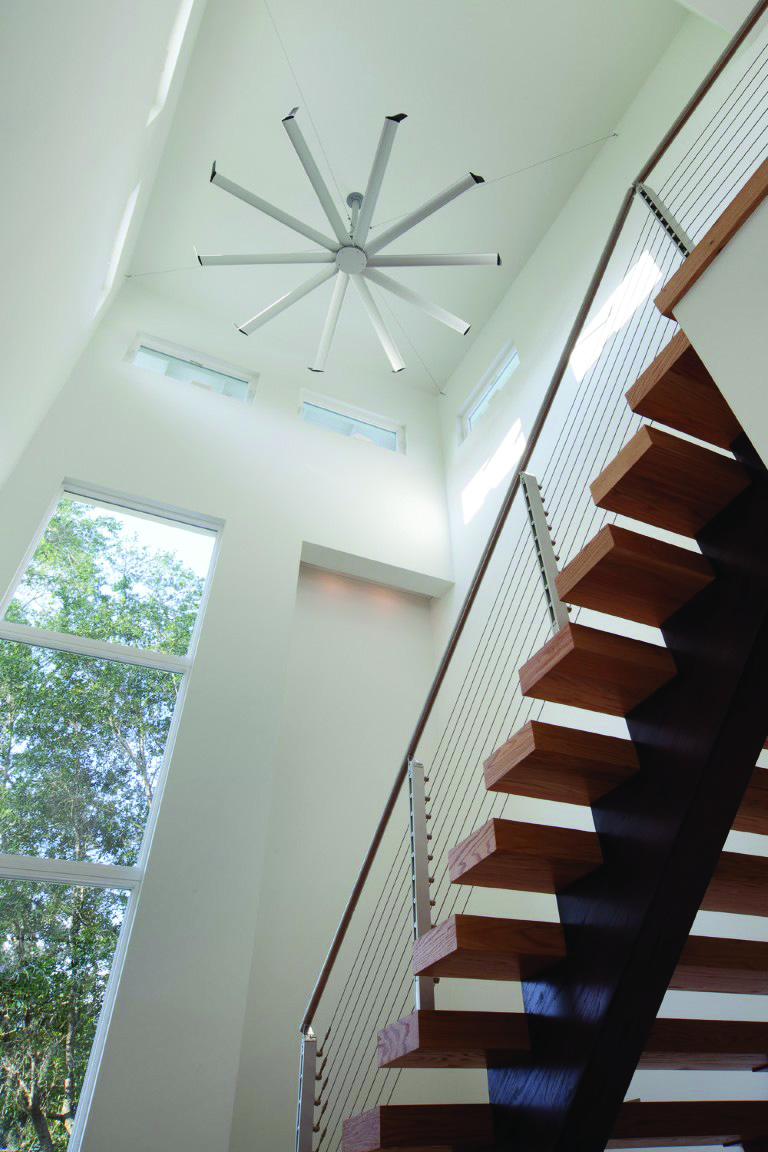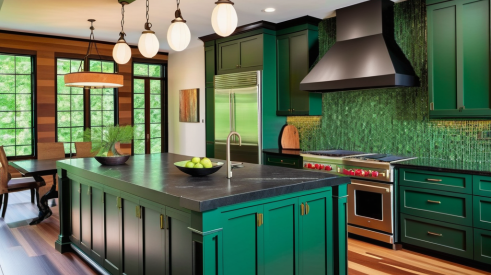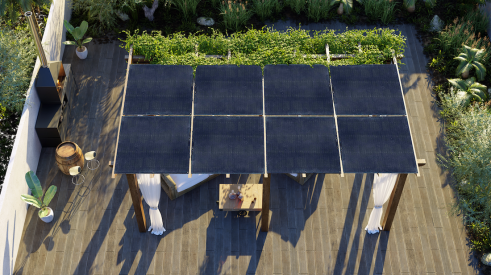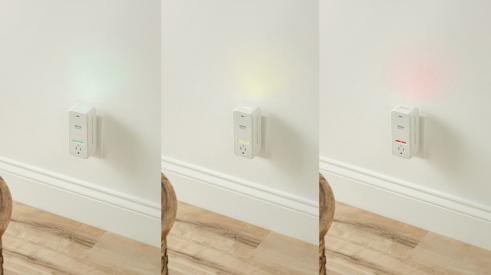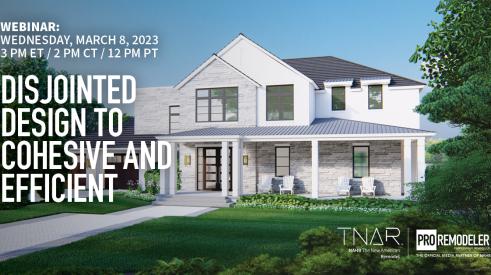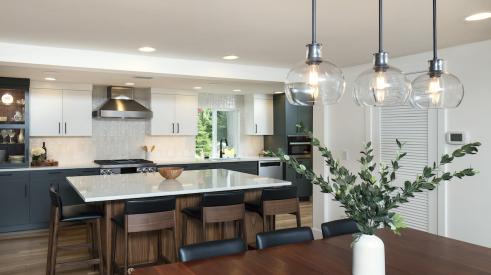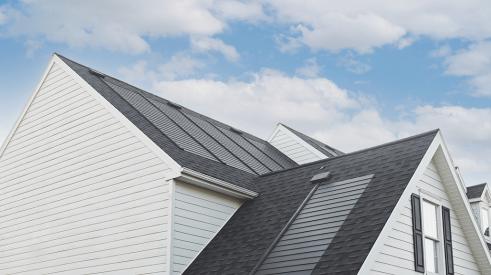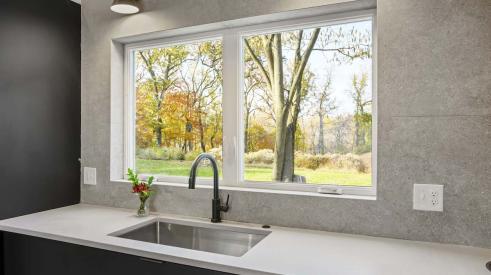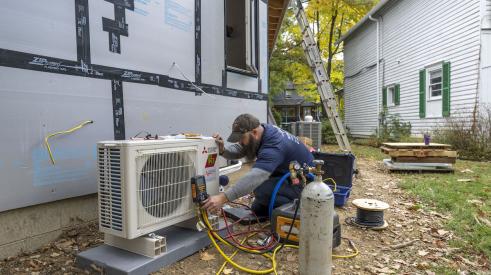The first certified DOE Challenge Home—the Wilson Residence in Winter Park, Fla.—produces more energy than it uses with construction costs one-third less than originally proposed. Completed in May 2012, this 4,305-square-foot custom home scores a HERS 57 without solar, which is well below the HERS 100 for a standard home built to code. With its photovoltaic system, the home produces better than zero net-energy performance, with a score of HERS -7. This translates into no electric utility bills and $123 annually in the homeowner’s pocket from the utility.
The homeowners hired e2 Homes, Winter Park, Fla., to build a dream home. From the start, Rob Smith, president of e2 Homes, worked with the homeowner, HERS rater, and mechanical contractor to come up with a package of measures that meets the energy-efficiency, comfort, and durability requirements of DOE’s Challenge Home while taking into account the hot-humid climate and the homeowner’s cost constraints.
“The DOE Challenge Home is data driven and performance driven, based on all the standards and it addresses concerns of different climates,” says Smith.
The home also meets the requirements of LEED for Homes, the Florida Green Building Coalition, Florida Water Star Gold, and other programs.
As specified in the Challenge Home requirements, the envelope was designed to meet all ENERGY STAR Version 3 requirements and 2012 International Energy Conservation Code insulation levels. Final blower door tests confirmed a tight envelope at 1.77 ACH 50.
The exterior walls were constructed of autoclaved aerated concrete (AAC) blocks.
“My client wanted AACs to avoid using drywall in this hot-humid climate,” said Smith. Like concrete block, AAC is mold-resistant, non-combustible, and not penetrable by termites or pests. The unique foam-like structure of the AAC also results in good insulating performance (R-8 for an 8-inch block), effective sound resistance, lightweight (one-fifth the weight of concrete), easy workability because it can be readily sawed or drilled, and excellent structural capabilities (AAC blocks and panels come reinforced with rebar).
The window package the team ultimately selected is an ENERGY STAR certified, low-E window that blocks 95 percent of ultraviolet and infrared light, with a solar heat gain coefficient of .24.
A light-colored standing-seam metal roof was installed over engineered roof trusses that are spray foamed underneath to R-20. This creates a sealed, conditioned attic with summer temperatures down to 85°F instead of a typical 150°F.
The heating and cooling system ducts and air handler are located within this unvented attic to meet the Challenge Home requirements of locating HVAC ducts within conditioned space. The home is heated and cooled by three systems: conventional heat pumps for the first and second floors (SEER 18, HSPF 9.5 and SEER 16.5, HSPF 9, respectively), and a ductless mini-split heat pump for the master bedroom (SEER 16, HSPF 10).
The team chose a supply-only ventilation system that creates a slight positive pressure in the house to help control humidity. The “low-cost ventilation system” includes a fresh air duct to the outside of the home with an electric damper regulated by the thermostat to meet ASHRAE ventilation standards.
The home is water efficient in several ways. Two tankless, propane-fired water heaters are located as close to the points of use they serve as possible to minimize water and energy waste (one is near the master bedroom and the other is near the kitchen, laundry room, and other bedrooms). Also, the house is double piped for a 7,000-gallon cistern that collects and supplies rain water to all toilets as well as to the plants in the backyard.
With the home designed for maximum energy and water conservation, the 13.5-kW photovoltaic system is now the appropriate last step for zero net-energy performance. Rather than mounting the 69 solar panels on the roof, the solar installer fit them together to form a watertight structure that is the roof of the home’s 962-square-foot porch.
The 195-Watt solar panels are bifacial, meaning they can generate some electricity from reflected light that hits the bottom surface of the panels. The panels also permit about 15 percent of the daylight to filter through them, lighting the porch area beneath. The hybrid inverter converts the panel produced direct current power into a utility-compatible alternating current, using a unique technology that overcomes the limitations of traditional central string inverter systems but at a much lower cost than micro-inverter systems.
“At the end of the day, my message for builders considering [building to] Challenge Home is that this program is very rigorous, so it should help builders stand out from the crowd,” said Smith. “If you plan early in the process, there doesn’t have to be a cost differential to implement high-performance building.” PR
--
Building Science is provided by EEBA and its National Education Partners. For further information on this project, visit www.e2homes.com.
The first certified DOE Challenge Home—the Wilson Residence in Winter Park, Fla.—produces more energy than it uses with construction costs one-third less than originally proposed. Completed in May 2012, this 4,305-square-foot custom home scores a HERS 57 without solar, which is well below the HERS 100 for a standard home built to code.
Add new comment
Related Stories
Working Toward Affordable, Resilient Homes
A new natural disaster protection act from NAHB aims to support hazard mitigation projects
Client Design Choices in the Time of Social Media and AI
Social media speeds up the trend cycles, and now artificially created images are falling into homeowners' hands
Indoor Air Quality Gets Smart
A home's air quality can now be cloud connected and fully automated with this innovative product
Webinar: From Disjointed Design to Cohesive and Efficient—The New American Remodel 2023
Access the recording for the first The New American Remodel webinar held on March 8 at 2 pm CT
5 Standout Energy-Efficient Products Spotted at IBS 2023
See what this green remodeler recommends from the show floor
Innovative Products: GAF Energy Timberline Solar Shingles
GAF Energy’s latest innovation has taken the solar world by storm
Detailed Design: Benefits of Biophilism
See the details our Model ReModel contractors chose to infuse nature into their ADU
Heat Pumps Now Required in Washington New Construction
Washington is the second state to require heat pumps in an effort to electrify homes



